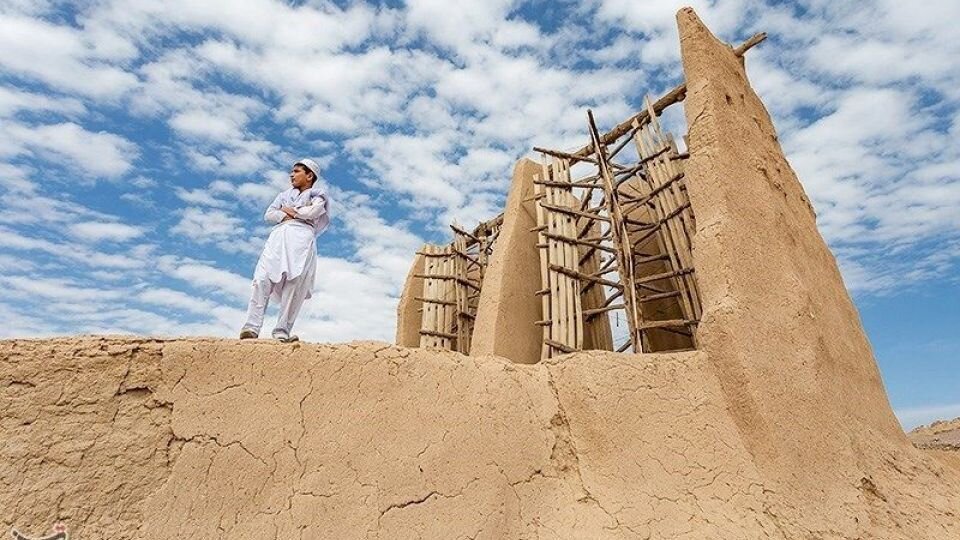Efforts underway to bring ancient windmill back to life

TEHRAN—A team of cultural heritage experts has begun work to fully restore the ruins of an ancient windmill located in the Hamun region of Sistan-Baluchestan province, southeast Iran.
Worn arches and damaged parts of the walls are being restored using original material, the provincial tourism chief Mojtaba Sa’adatian said on Sunday.
In addition, the team is to strengthen the foundation of the windmill and its bonding beams on the one hand, and to remove previous construction debris, on the other hand, the official explained.
Restoration of the windmill, which is one of the pioneers in the use of clean energy, is expected to be completed by October 22, Sa’adatian added.
A collection of ancient Iranian windmills (locally called Asbads) have been inscribed on UNESCO's tentative list of World Heritage properties.
Experts believe such primitive yet significant machines bear testimony to the human being’s adaption to nature by transforming environmental obstacles into opportunities. Iranian Asbads enjoy a smart technique to grind grains, a technique that goes back to ancient times when the people living in the eastern parts of Iran invent it in an attempt to adapt themselves to nature and transform environmental obstacles into opportunities.
According to the latest official data, a total of 374 Asbads have been identified so far mostly in the eastern wing of the country, but not all of them in faultless conditions.
The development of Asbads took place due to the scarcity of water resources and continuous 120-day winds, which annually sweep through the east and southeast of the Iranian plateau from late May to late September. Wood, mud, and brick were the main construction materials for the two-story windmills.
Britannica says the earliest known references to windmills are to a Persian millwright in 644 CE and windmills in Seistan [Sistan], Iran, in 915 CE.
According to the UN cultural body, Robert Forbes, a technology historian, stresses the point that the Islamic era windmill was the invention of Iranian. He writes: "this invention, which was initially an exclusive device for Iran and Afghanistan, turned into an important source of energy all over the Islamic territories in the 12th century, and not only it was used for the grinding of grains and operation of water pumps, but also the chopping of sugarcanes and other purposes.
Technically speaking, unlike European windmills, the Iranian design is powered by blades arrayed on a vertical axis in which the wind power is directly translated down without the need for any gears found on the horizontal-axis mills.
AM
